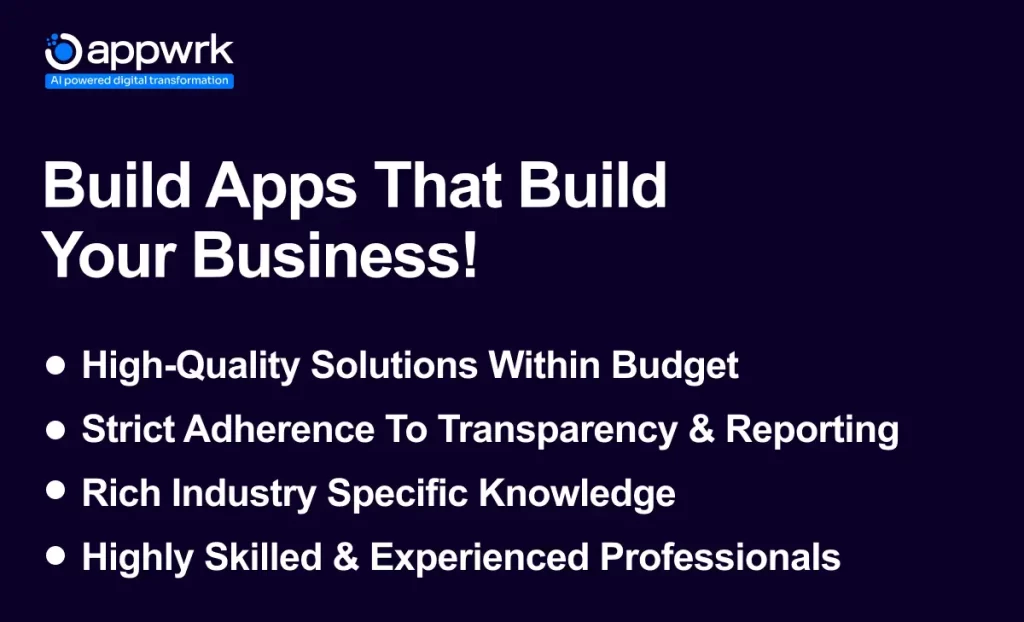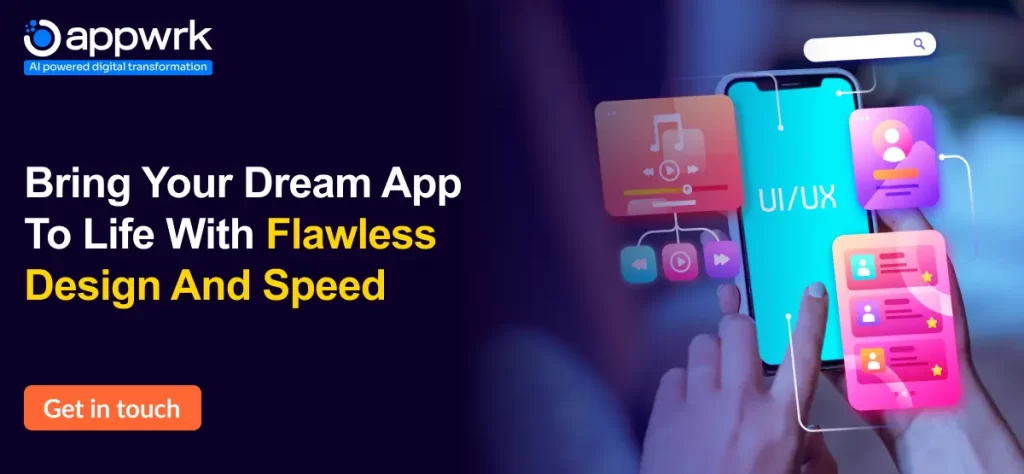Top Features of Gluestack ui
Have you ever found yourself overwhelmed by the endless task of creating custom UI components for every new project? Whether you’re building a website, app, or digital product, the process can be time-consuming, repetitive, and often a bit frustrating.
What if there was a way to break free from this cycle—speed up your development process, and still create beautiful, fully functional interfaces? Gluestack ui is a robust, modular UI framework that allows developers to quickly build modern, scalable, and beautiful user interfaces.
Gluestack ui features a wide range of customizable, responsive components that allow developers to create seamless, user-friendly interfaces quickly and efficiently. Whether you’re working on a simple web app or a complex enterprise solution, Gluestack ui helps you create seamless and responsive experiences with minimal effort.
In this blog, let’s explore the standout features of Gluestack ui and how they can make your development workflow smoother and more efficient.
Table of contents
- What is Gluestack ui?
- Features of Gluestack ui
- Components of Gluestack ui
- How to Get Started with Gluestack ui
- Benefits of Using Gluestack ui
- Conclusion
- Can Gluestack ui be used with React or React Native?
- Is Gluestack ui free to use?
- Can I test Gluestack ui components using Jest?
- Does Gluestack ui support mobile-first design?
- Can Gluestack ui be used with React or React Native?
- What is Gluestack ui testing?
What is Gluestack ui?
Let’s start with the basics. In simple terms, Gluestack ui is a modern, open-source, full-stack JavaScript framework designed to make your UI development life easier. It’s lightweight, highly customizable, and integrates seamlessly with various tools and technologies, allowing you to create stunning user interfaces without reinventing the wheel. 🚀
This framework focuses on modularity, reusability, and performance, allowing developers to design and develop UIs that are flexible enough to adapt to any project—be it a personal project or an enterprise-level application.
The best part? It’s super easy to integrate with other tools and frameworks like React, Vue, Angular, and more! Gluestack UI has powerful combinations that allow you to seamlessly build your front end while keeping everything neat and scalable. 💻
Features of Gluestack ui
When it comes to crafting seamless and visually stunning user interfaces, Gluestack-ui truly shines. But what sets it apart from other UI frameworks? 🤔 The answer lies in its rich set of features designed to make development faster, more efficient, and incredibly flexible.
Whether you’re building a small app or a large-scale enterprise project, these features empower you to deliver exceptional designs with minimal effort. Let’s dive into the different Gluestack-ui features and explore how they can transform your development workflow.
1. Modular Components for Flexibility
One of the core features of Gluestack ui is its modular architecture. This means you can pick and choose the components you need without bringing in unnecessary bloat. From buttons and sliders to complex forms and models, everything is designed to be reusable and customizable. This modularity streamlines your workflow by keeping the codebase clean and easy to manage. 📦
So, whether you need to build a simple UI or a complex one, you can do so in a flexible and scalable manner. Plus, if you’re working on multiple projects, you can easily reuse components across them, saving time and effort. 😎
2. Customizable Themes for Branding
Every brand is unique, and Gluestack ui gets that! With customizable themes, you can modify the look and feel of your components to match your brand’s identity. This means you can tweak colours, fonts, spacing, and other UI elements to make sure your application not only works well but also looks the part. 🎨 Let’s say you have a dark theme for your app but need a light version for certain parts, Gluestack ui lets you manage these customizations effortlessly. 🙌
3. Built-in Responsive Design for Mobile-First
In today’s world, responsiveness is key. Responsive design ensures that your app adapts to various devices and screen sizes, and Gluestack ui features have this built-in. Whether your users are browsing on a desktop, tablet, or mobile, your app will provide a consistent and smooth experience. 📲 Thanks to Gluestack ui’s responsive components, your interface will automatically adjust based on the device.

Also Read: UX and UI- Which one is More Important?
4. Seamless Integration with Popular Frameworks
You are probably using frameworks like React, Vue, or Angular to build your web applications. Gluestack ui is built to seamlessly integrate with various technologies, so you won’t need to overhaul your existing tech stack. 🔧 For instance, if you’re using React, you can effortlessly import Gluestack-ui’s components and start building right away—no setup headaches required.
5. Accessibility Features to Reach Everyone
In the digital world, accessibility is essential. And Gluestack ui doesn’t overlook this aspect. It follows WCAG (Web Content Accessibility Guidelines), ensuring that all of its components are accessible to users with disabilities.
This not only makes your app more inclusive but also helps with SEO and better user engagement. 🌟 Building accessible apps should be part of every developer’s checklist, and Gluestack-ui makes it easy to do that from the get-go! 👍
6. State Management for Dynamic UIs
If you’ve ever struggled with managing state in complex web applications, Gluestack-ui has you covered. Its state management system allows you to track and manage the state of various components efficiently.
This makes it easy to build dynamic UIs that change based on user interactions, like updating a shopping cart, showing notifications, or changing themes. 💬 Managing state becomes much easier, allowing you to focus more on developing features rather than wrestling with state issues. 😌
7. Developer-Friendly Tools
Gluestack ui features are designed with developers in mind. It comes with a variety of helpful tools, like detailed documentation, code samples, and an intuitive CLI. These tools make it easier to get started quickly and keep things organized as your app grows. 📚 Gluestack ui is equipped with everything you need to build, test, and deploy your apps smoothly. 🧰
8. Real-Time Collaboration
Collaboration is essential in today’s fast-paced development world. Whether you’re working in a team or with a client, real-time collaboration ensures that everyone is on the same page. With Gluestack-ui, you can easily share components, track changes, and collaborate on building the app in real-time. 👥
Also Read: Understanding the Real Importance of Web Design Services
Components of Gluestack ui
At the heart of Gluestack ui are its carefully crafted components—your go-to tools for creating professional, responsive, and engaging user interfaces. Along with the powerful Gluestack ui features, its components give you the ability to design apps that look and perform exceptionally well across devices. Here is a graph that shows the increase in the downloads of Gluestack-ui components:

- UI Components
Gluestack-ui offers a vast library of UI components, including buttons, cards, sliders, forms, and more. These components are pre-built, customizable, and ready to integrate into your app, saving you time on repetitive UI tasks. 🔲
- Navigation Components
Navigation is an essential part of any app. Gluestack ui includes various navigation components like menus, tabs, and sidebars, all designed to be responsive and customizable. Your users can easily find their way around your app, no matter the device they’re on. 🧭
- Layout Components
Building structured and organized layouts is easier with Gluestack ui’s layout components. It offers grids, flexboxes, and containers to help you create a clean and well-organized UI for any type of app. 🧳
- Forms and Inputs
Forms are a fundamental part of user interaction, and Gluestack ui makes them easy to create and customize. Whether you need simple input fields or complex multi-step forms, you can build them using Gluestack ui’s form components. ✔️
- Modals and Popups
Need to grab your user’s attention? Use modals or popups! Gluestack ui provides customizable modal components that let you display important information, alerts, or interactive content in a stylish and effective way. 💥
Also Read: How interactive Website design can increase customer sales?
How to Get Started with Gluestack ui
In order to use all the amazing Gluestack ui features, you need to first get started with it. Here’s a simple guide to get you up and running in no time.
Step 1: Install Gluestack ui
First things first, you need to install Gluestack-ui into your project. You can easily add it via npm or yarn. Run the following command:
npm install gluestack-ui
Or with yarn:
yarn add gluestack-uiStep 2: Import Components
Once installed, import the components you need into your application like so:
import { Input, Button } from 'gluestack-ui';
function SignupForm() {
return (
<form>
<Input type="text" placeholder="Enter your username" />
<Input type="password" placeholder="Enter your password" />
<Button variant="primary" type="submit">Sign Up</Button>
</form>
);
}
export default SignupForm;Step 3: Customize and Build
As we discussed earlier, Gluestack-ui is highly customizable. Adjust the theme, set up your components, and tailor them to fit your project’s needs. You can start building your UI based on your designs, and don’t forget to check out the documentation for additional resources and examples. 📚
Benefits of Using Gluestack ui
A great UI plays a crucial role in how users engage with an app. In fact, a well-executed UI can boost conversion rates by up to 200%. That’s why tools like Gluestack ui are essential as not only do they help create stunning interfaces, but they also speed up the entire development process.
Building a visually appealing and user-friendly app can often feel like navigating a maze. 🌀 But the Gluestack ui features and benefits simplify the entire process while giving you the flexibility to design apps that stand out. 🌟 Let’s explore the key benefits that make Gluestack ui a favorite among developers:
1. Saves Time and Effort
With its pre-built components, Gluestack-ui lets you avoid reinventing the wheel. Whether you’re building a simple app or something more complex, you’ll save tons of time by reusing components and focusing on what matters most: building great features. ⏳
2. Flexibility and Scalability
From small personal projects to large-scale enterprise applications, Gluestack ui is highly flexible and scalable. You can add new components and adjust your application as it grows, ensuring that your app evolves with your needs. 📈
3. Enhanced User Experience (UX)
By using Gluestack-ui, you can create a seamless and delightful user experience that’s accessible, responsive, and visually appealing. No more worrying about clunky interfaces or broken layouts across devices! 🙌
4. Cost-Effective Development
Since Gluestack ui is open-source, you’re saving money on expensive tools and frameworks. Plus, the time saved from using pre-built components means you can focus more on building core features, ultimately reducing your development costs. 💸
Conclusion
In today’s fast-paced development world, building stunning, responsive, and functional user interfaces shouldn’t feel like climbing a mountain. 🏔️ With the powerful Gluestack ui features, you get the perfect combination of speed, flexibility, and ease of use. Its modular components, seamless customization options, and integration capabilities make it a must-have tool for developers of all levels.

Need an expert team to create a visually captivating app? Look no further than APPWRK IT Solutions—a leading app development and AI-driven digital transformation company. We specialize in crafting high-performance solutions by incorporating the latest technological innovations. Contact us today to drive your growth the right way!
FAQs:
Can Gluestack ui be used with React or React Native?
Yes! Gluestack ui integrates seamlessly with both React and React Native, providing a powerful set of components that can be used to build web and mobile applications. Whether you’re developing a web app or a cross-platform mobile app, Gluestack ui works effortlessly within these frameworks.
Is Gluestack ui free to use?
Yes, Gluestack ui is an open-source framework, which means it’s free to use and can be customized as needed. You also benefit from a community of developers who continuously improve and add new features to the framework.
Can I test Gluestack ui components using Jest?
Yes, you can test Gluestack ui components using Jest. Jest is a JavaScript testing framework designed to ensure the correctness of any JavaScript codebase. It allows you to write tests with an approachable, familiar, and feature-rich API that provides results quickly. With its well-documented and highly extensible nature, Jest requires little configuration, making it a great choice for testing Gluestack ui components.
Does Gluestack ui support mobile-first design?
Absolutely! Gluestack ui is built with a mobile-first approach in mind. It ensures that your UI components are responsive and look great on mobile devices first, and then adapt seamlessly to larger screen sizes such as tablets and desktops.
Can Gluestack ui be used with React or React Native?
Yes! Gluestack ui integrates seamlessly with both React and React Native, providing a powerful set of components that can be used to build web and mobile applications. Whether you’re developing a web app or a cross-platform mobile app, Gluestack ui works effortlessly within these frameworks.
What is Gluestack ui testing?
Gluestack ui testing involves using tools like Jest or other testing frameworks to ensure that the UI components built with Gluestack ui are functioning as expected, rendering correctly, and providing a seamless user experience across different devices and screen sizes.
About The Author

 Free Quote
Free Quote
















































